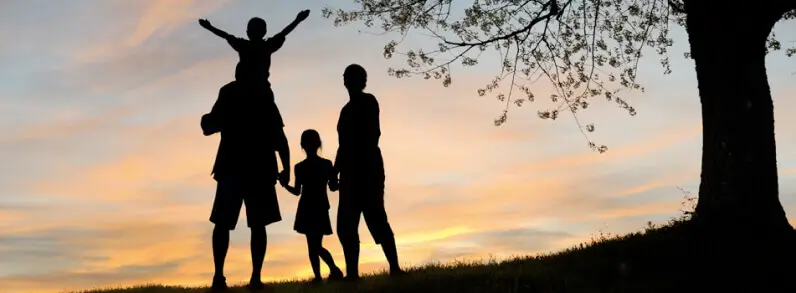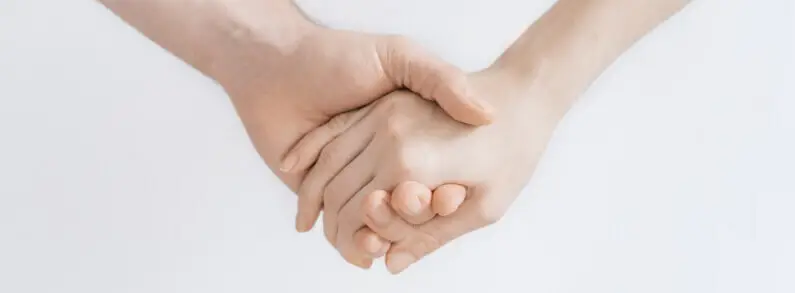Understanding Burial
Burial in a casket is often viewed as the most traditional way of saying goodbye and honoring a loved one. While most people envision the conventional funeral ceremony with a viewing and a graveside service, we offer a range of services to best suit the wishes of your loved one. Here is some additional information on the history of burials, as well as answers to some common questions about the process.
Understanding Burial & Embalming
The dead have been formally buried for at least 200,000 years and archeologists attribute the custom to Neanderthals. People use earth burials to show respect for their dead, for health reasons, and to fulfill religious prescriptions. Of all the great civilizations, Egyptians are singled out for their burial practices. Within this culture was a persistent theme to death and life beyond and the divine origin of the soul. In the western world and as Christianity grew, churchyards served as the main sites for burials. Burial within the church itself was reserved for wealthy persons or those with religious status. As villages expanded into communities, churchyards became crowded leading to the creation of modern cemeteries. Embalming originated in Egypt, estimated to have begun about 3200 BC. as a necessary requirement for resurrection and preservation of the body. The roots of modern embalming began during the Civil War as a practical way to meet the demand of families who requested that their dead be returned home for burial in family plots or farms.
Why burial and embalming?
Today, it is customary to transfer the deceased person soon after death to the funeral home to arrange funeral activities and as the place where the body is cared for. In Early America, the deceased person was prepared by family members and friends and a wake was held for several days, accompanied by serving food, beverages, music, and story-telling about the deceased person as a way to show support to the bereaved. Still today, it is common for a funeral luncheon or dinner to be held for mourners and support-givers.The single most publicized event that helped educate the public and advance the practice of embalming was the assassination of President Abraham Lincoln in 1865. Embalmed by the noted Washington, D.C. surgeon, Dr. Brown and his colleague, Henry Cattell, Lincolns body was viewed by more than a million and half mourners before leaving on a several-day train procession to his tomb in Illinois. Amazed by the preserved body of Lincoln, the new commercial process of embalming was born. Similar principles and purposes for embalming exist today, mainly to sanitize the body and preserve it so family members have time to gather, plan funeral-memorial activities, pay respects and offer support to the bereaved. Embalmers undergo extensive training in specialized colleges and must pass a state-board examination.
Where will the body be buried?
Earth burials take place in cemeteries. Entombment takes place in a mausoleum, abuilding within a cemetery for above-ground placement of deceased persons. Cremated remains are also buried in cemeteries. Modern cemeteries, usually separate from their communities, attract historians, bird watchers, joggers, horticulturists, even provide tours of the famous and infamous buried within. There are approximately 100,000 cemeteries in the country. Arlington National Cemetery is the best-known cemetery and is restricted to veterans only.Several cemeteries are available in Southern Utah. We work with all cemeteries and arrange for burials and entombment's on a world-wide basis. We are expert in arranging burials in any National Cemetery for qualifying veterans and family members.
Are natural funerals and green burials available?
Yes. In a natural funeral, the deceased person is professionally cared for without the use of formaldehyde-based treatment and promotes the return to natural elements using biodegradable caskets instead of metal caskets. Funeral activities are still held, usually at the funeral home or in a residence. Green burials occur in green-designated cemeteries or sections of a cemetery that permit the placement of a biodegradable caskets directly into the grave without a support structure, such as burial vaults. These options often appeal to those wanting a ceremony with more personal connection to the deceased, who are ecologically-concerned, prefer home-based activities, or when this is recommended by religious preferences.
Are home-based funerals available?
Yes. Southern Utah Mortuary believes in fulfilling the wishes of those who seek our service. We provide full disclosure of all options and strive to provide services that are meaningful to you. Our staff welcomes working with you and will assist you in making arrangements to accommodate your exact wishes for a home-based farewell.
Why is Southern Utah Mortuary the first choice for burials of any kind?
Our facilities are state-of-the-art, comfortable and welcoming
- Our dedicated, licensed staff believes in accommodating and fulfilling your wishes and in doing things your way
- Until burial or shipment, the deceased person always remains in our custody - never transferred into a strangers hands
- Through our national and international network, we can arrange transfers and transport to and from any part of the world
- Burials are scheduled at the convenience of the family
- We are knowledgeable of all state, national and international laws, are fully licensed and nationally recognized as experts
- We work within your budget
How are arrangements made?
With one call to Southern Utah Mortuary, we schedule a meeting with the family to discuss your wishes and provide answers to your questions regarding earth burial and mausoleum choices, natural or home-based funeral activities, cremation, long distance shipment or other special needs. We also provide advance funeral planning to ensure that your exact wishes are followed at the time of need.

Plan Ahead
We understand that making the many decisions that come at a time of loss can be difficult. We’ll take the first step with you!

Grief Support
Learning about grief and mourning can help you survive and eventually heal.

Send Flowers
Express your condolences by sending flowers to the family.


